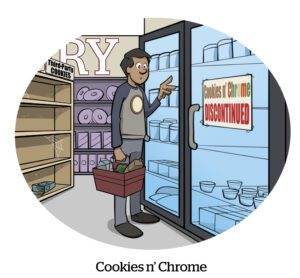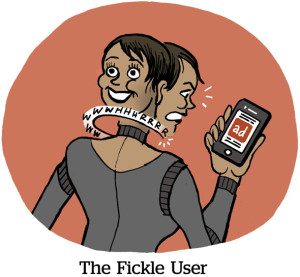Here’s today’s AdExchanger.com news round-up… Want it by email? Sign up here.
The CMA Has Its Say
Google’s latest cookie deprecation delay had some industry watchers speculating that it was trying to preempt a negative assessment of its Privacy Sandbox cookie alternative from the UK’s Competition and Markets Authority (CMA).
Well, the CMA just released its latest report on the Privacy Sandbox rollout. And just as pundits predicted, it highlights several concerns over how the Sandbox might give Google an advantage over other ad tech platforms and digital publishers.
DPG Media’s Simon J. Harris outlined the CMA’s key takeaways in a thread on X.
The CMA still needs assurance that Google won’t use the Sandbox to bolster its already dominant market position. And it’s examining whether Google should even be allowed to use its first-party data for targeting and measurement on its owned and operated sites.
The report also flagged steps Google has agreed to take to clarify concerns about the Sandbox’s Topics and Protected Audience APIs.
For Topics, Google will give users more transparency into how the API uses their data and will periodically reaffirm their consent for data usage.
For Protected Audiences, Google will update Chrome’s user interface to disclose how sites build targetable interest groups. Google will also address concerns that it is effectively mandating that publishers use Google Ad Manager as their ad server and top-level seller. Lastly, Google will ensure that the Sandbox’s fenced frames feature can support video and native ads.
Signals Of Change
In the meantime, marketers are turning to media mix modeling (MMM) and incrementality testing to help prepare for what will happen when cookies finally do disappear.
MMM is back in style among advertisers because it works when signal lacks, according to ad execs who gathered to talk about signal loss in New York City last week at an event hosted by TripleLift.
The old-school attribution model attributes ad spend by channel over the course of weeks or sometimes months to help buyers assess return on ad spend even without cross-channel identifiers that help measure who saw the ads.
In addition to MMM, incrementality testing with alternative web identifiers is also “really important for many of our advertisers” to measure the impact of ad buys without cookies involved, said Marion Sayre, digital marketing director at Kepler, at the event.
But when it comes to incrementality testing, “do it smart,” Sayre advised. “Don’t take the next six months spending a ton of money running every [possible] test.”
While alt IDs have plenty of potential, their scale is still too small, she said, and spending too much money testing them may just result in more ad repetition and wasted dollars.
Snap Snaps Back
Snap reported an impressive revenue turnaround in its Q1 2024 earnings on Thursday, writes Eric Seufert at Mobile Dev Memo.
Like other app-based social platforms, Snap’s ad business took a major hit when Apple introduced its AppTrackingTransparency (ATT) framework halfway through 2021.
Prior to ATT, Snap reported 116% revenue growth in Q2 2021. That fell to 57% the following quarter, and declined steadily before bottoming out at -7% in Q1 2023.
But Snap returned to double-digit growth in Q1 this year, at 21%.
So how did Snap right the ship? Through investments in non mobile ID-based attribution.
Back in Q3 last year, Snap introduced a new feature that lets advertisers bid directly on attributed seven-day click-through conversions. In Q1, it expanded this feature to include app install and purchase events, which produced a 75% uptick in purchase-related conversions.
Snap also partnered with Snowflake to launch a new version of its Conversion API (CAPI), which led to a 300% increase in integrations.
These new attribution tools likely spurred increased performance for direct-response advertisers, Seufert writes. That led to an 85% increase in small- and mid-sized brands advertising on Snap in Q1 and a 17% increase in direct response revenue.
But Wait, There’s More!
Brian O’Kelly’s open letter to scandal-of-the-week-obsessed pundits on why digital advertising’s flaws never get fixed. [blog]
Tech spending remained a drag on agency holdco revenue in Q1. [WSJ]
G/O Media sells The Onion to a group of journalists and digital media execs. [Awful Announcing]














